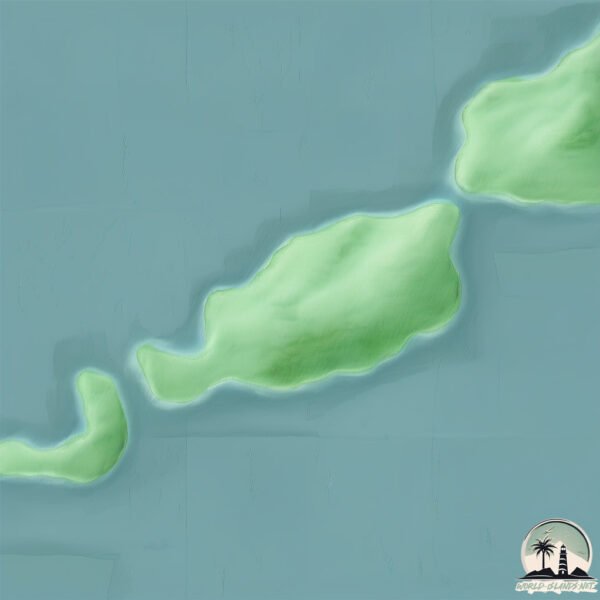Welcome to Banana , a Tropical island in the North Atlantic Ocean, part of the majestic Atlantic Ocean. This guide offers a comprehensive overview of what makes Banana unique – from its geography and climate to its population, infrastructure, and beyond. Dive into the details:
Geography and size of Banana
Size: 2.633 km²Coastline: 11.8 kmOcean: Atlantic OceanSea: North Atlantic OceanContinent: Africa
Banana is a Small Island spanning 2.6 km² with a coastline of 11.8 km.
Archipel: –
Tectonic Plate: Panama – A small plate in Central America, primarily under Panama and Costa Rica, known for its seismic and volcanic activity due to interactions with the Cocos and Caribbean Plates.
The geographic heart of the island is pinpointed at these coordinates:
Climate and weather of Banana
Climate Zone: TropicalClimate Details: Tropical Monsoon ClimateTemperature: Hot
Climate Characteristics: Characterized by heavy rainfall, high humidity, and uniformly high temperatures, but with a distinct short dry season. It features a seasonal reversal of prevailing wind directions.
Topography and nature of Banana
Timezone: UTC±00:00Timezone places: Europe/LisbonMax. Elevation: 45 m Mean Elevation: 25 mVegetation: Evergreen Broadleaf ForestTree Coverage: 50%
The mean elevation is 25 m. The highest elevation on the island reaches approximately 45 meters above sea level. The island is characterized by Plains: Flat, low-lying lands characterized by a maximum elevation of up to 200 meters. On islands, plains are typically coastal lowlands or central flat areas.
Dominating Vegetation: Evergreen Broadleaf Forest
Vegetation: 3 vegetation zones – Moderately Diverse Island
Infrastructure and Travelling to Banana
Does the island have a public airport? no .
Does the island have a major port? no .
The mean population of Banana is 481 per km². Banana is Moderately Inhabited. The island belongs to Sierra Leone .
Continuing your journey, Sherbro is the next notable island, situated merely km away.
Anantara Doha Banana Island Tour: 5 Star Private Island Resort in Qatar
Take a tour of the best luxury 5 star private island resort in Qatar: Anantara Doha Banana Island Resort! Join Food & Travel ...
Anantara Doha Banana Island Tour: 5 Star Private Island Resort in Qatar
Take a tour of the best luxury 5 star private island resort in Qatar: ...
Take a tour of the best luxury 5 star private island resort in Qatar: Anantara Doha Banana Island Resort! Join Food & Travel ...
Welcome to Qatar! - Banana Island
Banana Island Resort Doha by Anantara is a 5-star luxury resort on a ...
Banana Island Resort Doha by Anantara is a 5-star luxury resort on a private island, about twenty minutes away from Doha.
DRONE VIEW OF BANANA ISLAND LAGOS
Banana Island is an artificial island off the foreshore of Ikoyi, ...
Banana Island is an artificial island off the foreshore of Ikoyi, Lagos, Nigeria. Its name derives from the curvature of its shape.
Sierra Leone is classified as Least developed region: Countries that exhibit the lowest indicators of socioeconomic development, with the lowest Human Development Index ratings. The level of income is Low income.
News – Latest Updates and Headlines from Banana
Stay informed with the most recent news and important headlines from Banana. Here’s a roundup of the latest developments.
Loading...
Please note: The data used here has been primarily extracted from satellite readings. Deviations from exact values may occur, particularly regarding the height of elevations and population density. Land area and coastline measurements refer to average values at mean high tide.

